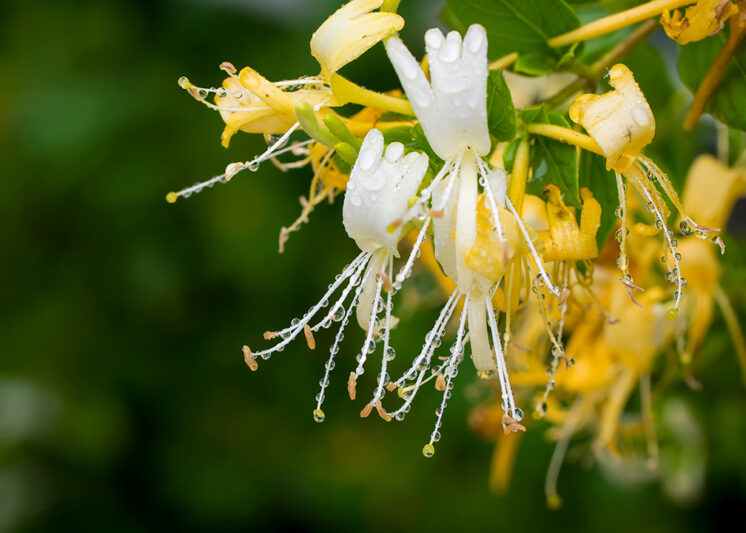
I know spring is here to stay when our honeysuckle blooms. I remember in my early childhood plucking the flowers and sucking out their yummy nectar. Little did I know then that this lovely flower has many medicinal uses, too.
First of all, honeysuckle is effective for colds, flu, and viruses with fever, headaches, and sore throats. Often put in cold and flu formulas, it is one of the herbs in the famous Yin Qiao San (Lonicera and Forsythia Formula). This is most effective when taken preventatively or at the very first signs of a cold or flu.
But honeysuckle has even more uses. It is one of the best anti-toxin herbs available, effectively treating all sorts of skin eruptions, boils, sores, abscesses and swelling. It is used for staph and strep infections and other conditions needing antibiotics. I always include it in my skin formulas along with forsythia, as opens the surface to release heat toxins.
Honeysuckle also reduces swellings of various types and in any stage, especially of the breast, throat, eyes, and intestines. It treats intestinal abscess and is great for hot, painful eyes (conjunctivitis), or throat, particularly with swelling and itching. It is also used for Inflammations of the intestines, urinary tract and reproductive organs.
This herb is at its best when treating painful sores and swelling of the breasts, especially if there’s pus. Recent studies in China have found it effective for painful sores including tumors and certain cancers, particularly of the breast.
That’s not all. When honeysuckle flowers are charred, they stop bleeding, mostly that associated with dysentery or cystitis. Plus the vine is used for arthritis, stiffness, and rheumatic inflammations.
What more could be asked of a spring flower?
So enjoy honeysuckle flower, not only in Spring but also all year long.
Honeysuckle Flower Lonicera japonica Jin yin hua (Chinese)
Also called: Lonicerae Flos Family: Caprifoliaceae
Energy and flavors: Cold, sweet
Organs and channels affected: Lung, Stomach, Large Intestine
Chemical constituents: Luteolin, inositol, tannin
Properties and actions: Alterative, antibiotic, diuretic, refrigerant, diaphoretic, anti- rheumatic; clears Heat toxins, releases Exterior Wind-Heat, cools the Blood, dispels Wind-Dampness
Contraindications: None noted
Dosage and preparation: Infusion, 6-20g. Tincture (1:2 @50% ABV fresh; 1:5 @50% ABV dry), 10-60 drops TID. Use smaller doses for Wind-Heat and larger doses for toxins.
